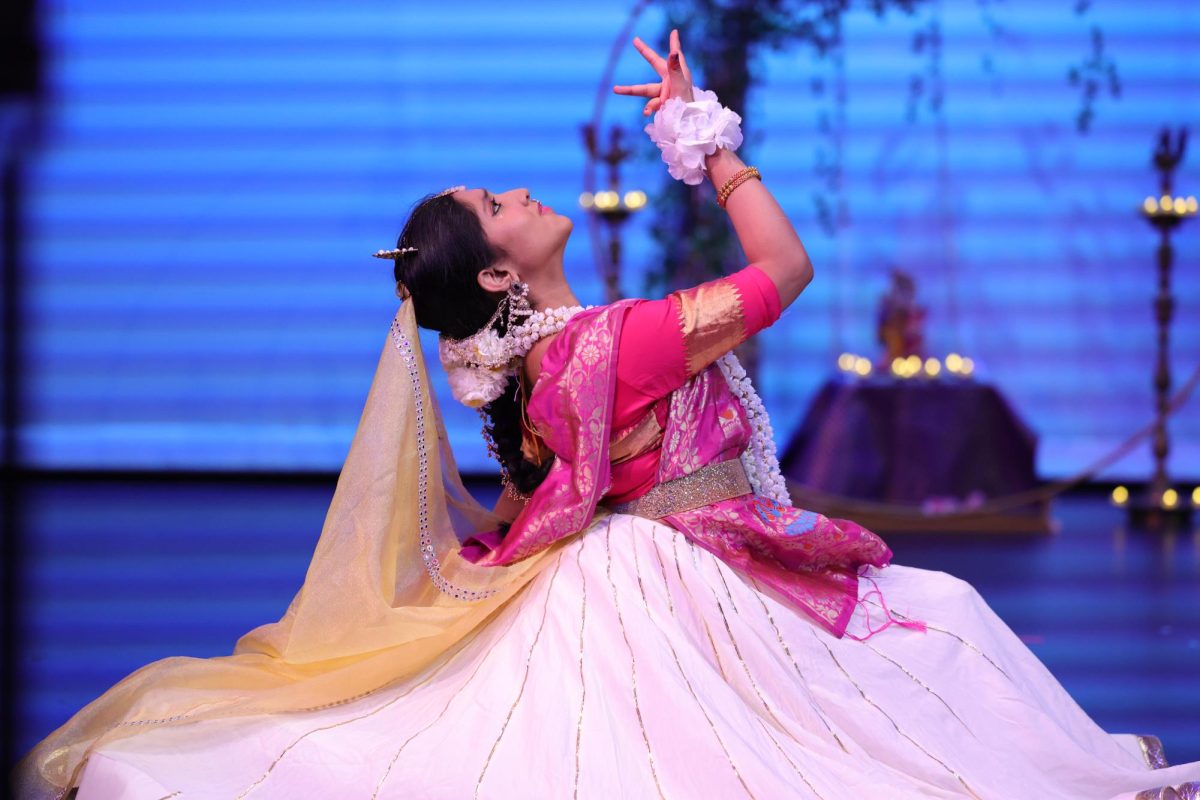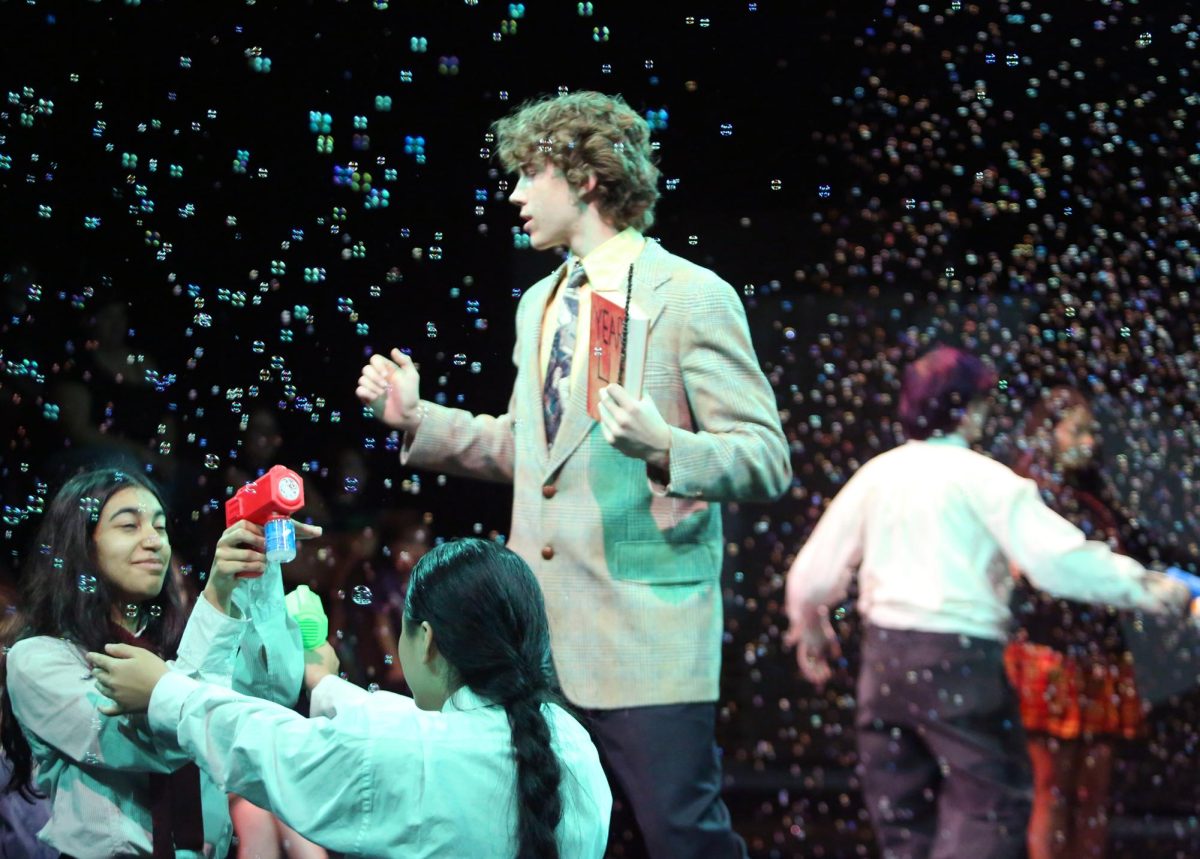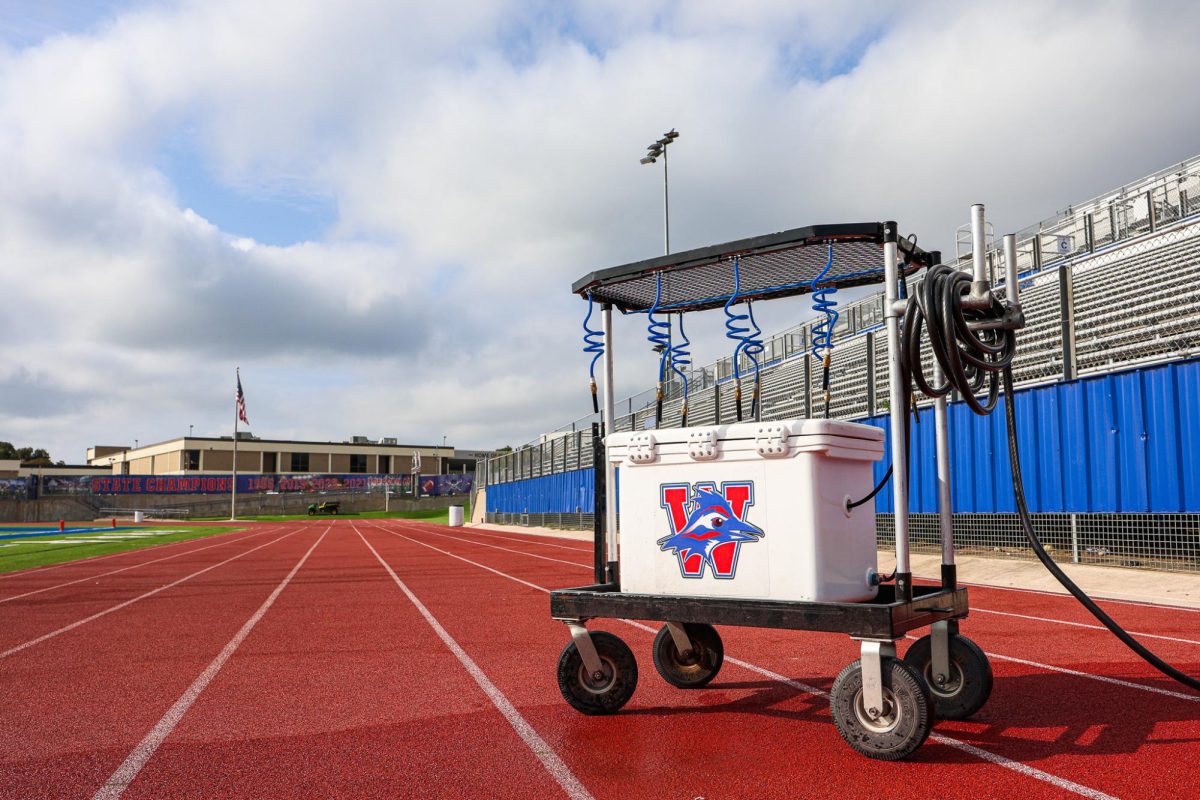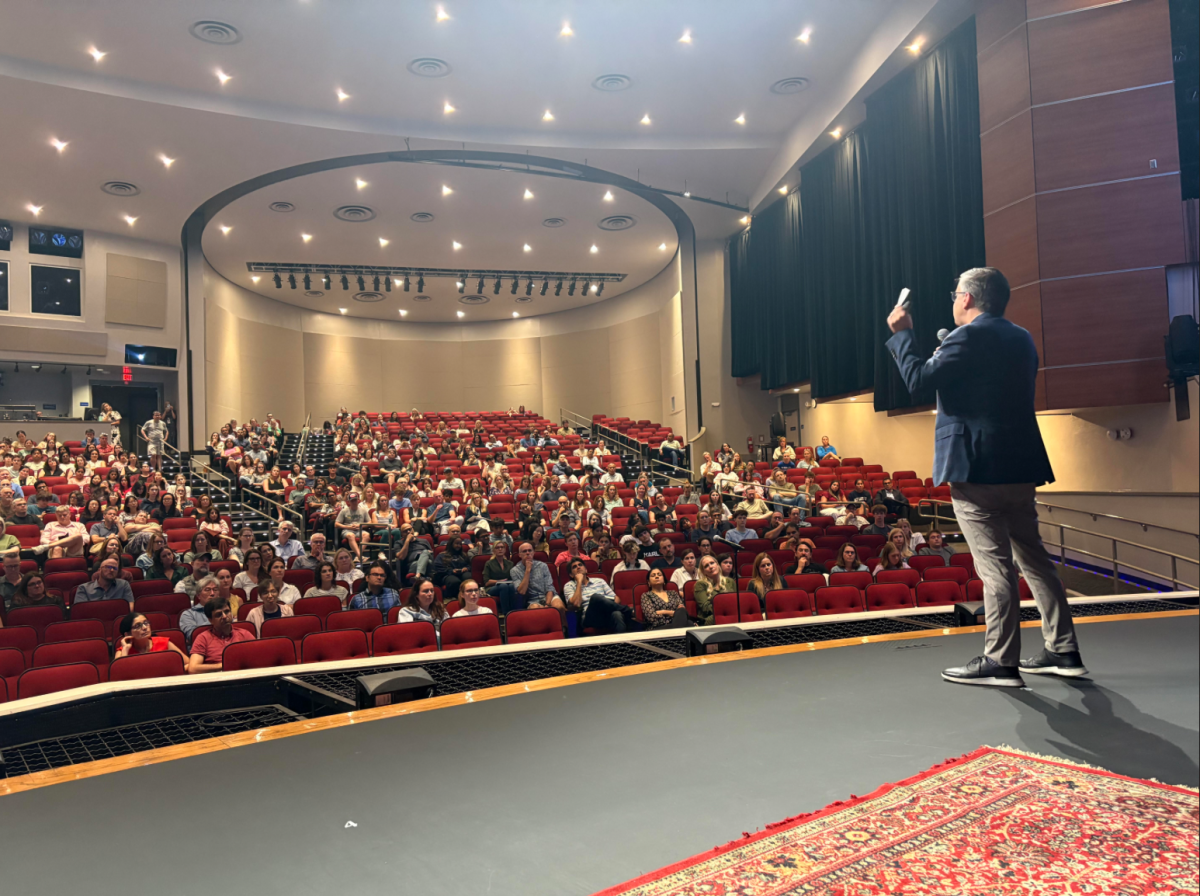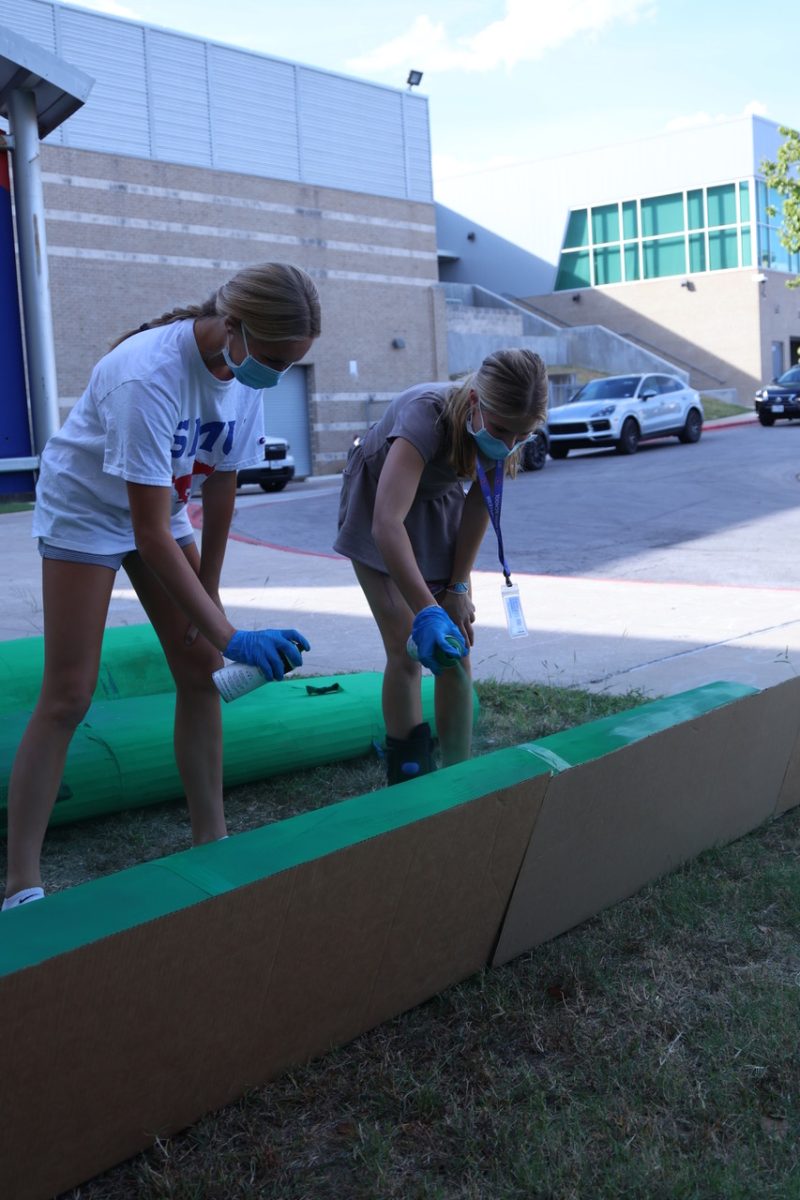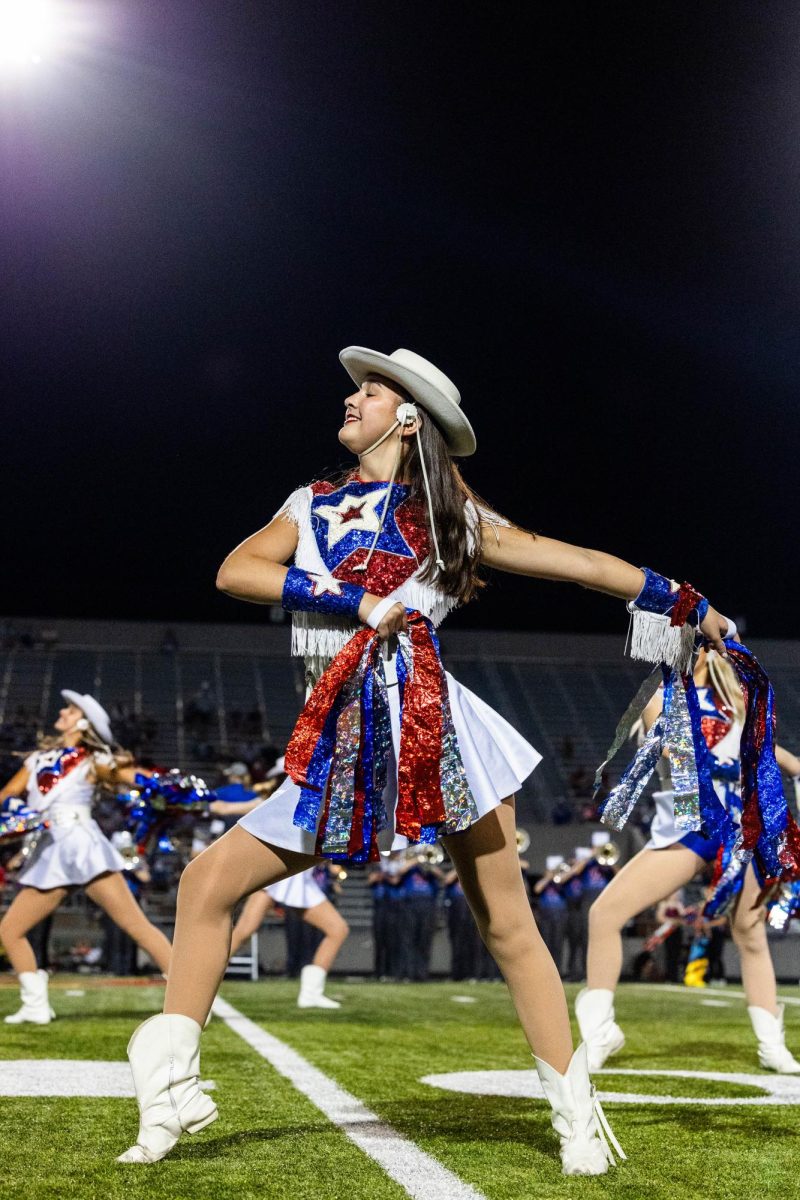As sophomore Tara Srinivasan moves across the stage, her solo coming to an end, dancers dressed in flowing skirts and colorful shawls enter the stage holding candles signifying peace. The string quartet plays the last note, and applause rings out from the Black Box Theatre Jan. 24, as Shringar comes to an end.
The conclusion of the performance by Nritya Mandala, the South Asian dance club, marks the rewarding end to seven months of hard work by the club members. A story of friendship, Shringar is a combination of a Bengali dance drama and multiple North Indian dance styles.
“The show was a really big success. All the hard work and efforts that we put into it, after seven months, was all definitely worth it,” sophomore and production manager Navya Gujral said. “I hope that a lot of people got to see us and got to see how much we’ve improved [over the year].”
Nritya Mandala is a club open to all, regardless of dance experience, and members come from all sorts of backgrounds. For example, sophomore and Nritya Mandala president Adrita Roy has trained in Kathak for 12 years, sophomore Rishi Shah did not have classical training but grew up immersed in South Asian culture, and some members did not grow up with that style of dance or culture.
Shringar is the second production by Nritya Mandala at the Black Box Theatre, and it was made up of eight songs with monologues throughout. Their first performance was in a Bollywood style, consisting of three dances, each with their own unique costume. Following their first performance, Roy knew she wanted to do a dance drama next, and in June she decided to follow Bhanusingher Padabali, a Bengali dance drama by Rabindranath Tagore.
“I did a lot of research regarding this dance drama,” Roy said. “I read over the monolog. I called back home in Bangladesh to my auntie, and I told her to find Geetabitan, which is a book that has all the rules, [lyrics and time signatures of Tagore’s songs and dance dramas], and she sent me pictures of each of the songs.”
Bhanusingher Padabali follows Radha (played by Roy) and Krishna (played by junior Ved Hoskote), portraying their friendship and love for each other. Bhanusingher Padabali is unique to other dance dramas as there is not a specific order for the songs, allowing different productions to choose a song order based upon what fits their storyline best. Bhanusingher Padabali traditionally consists of 14-15 songs, but to fit into time constraints, Roy chose eight songs she felt fit their shortened interpretation of Bhanusingher Padabali.
After choosing the songs, Roy began to choreograph most of the dances to each of the songs. Having the most experience in Kathak, she decided to choreograph most of the show in Kathak, a form of Indian Classical dance that originated in Northern India. However, the show also incorporated duets that included both Kathak and Bharatanatyam, showcasing different club members’ strengths. Choreography was first sent to club members at the end of June.
In July, Roy had the idea to incorporate a string quartet into the performance. She reached out to her friend, sophomore violist Jack Decker, who composes music.
“I asked him, ‘Would you be able to do an arrangement of a traditional song?’ and he was totally up for it,” Roy said. “I personally really liked the idea of utilizing Eastern classical [music], but using the practical form of western classical to reach the audience. We kind of took a leap of faith, and I loved the way it worked out.”
Along with Decker, sophomore violinists Dylan Zhong and Alex Cipto and sophomore cellist Emmy Yang played the final song of the show, the prayer song Decker created an orchestral arrangement of.
The club met virtually over summer to go over choreography and practice. When the school year began, they began to meet together on Fridays. Rehearsals occurred wherever was available, from meeting at school, to different people’s houses and garages, or even meeting virtually if they couldn’t find a space available to practice their dances.
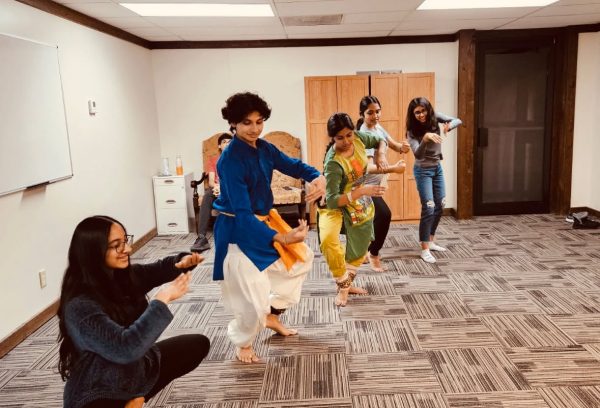
“You have such a diverse group of people, there are people in band, orchestra, all these different extracurriculars and not everyday works for each person,” Shah said. “It’s a lot of streamlining with people and figuring out what dates work for each person and meeting together in different forms like [at] school, classrooms … It’s really fun once you get to know each other. It’s not just professional, it’s more like friends are all dancing together and really performing.”
Scheduling practices and finding places to rehearse is just one of the challenges Nritya Mandala faced as a student-led club. The club had to figure out how to put on a quality production with props and colorful, traditional costumes with a limited budget. Most costumes were similar to a traditional Kathak costume, with a few Bharatanatyam costumes as well. A variety of parts and accessories made up the colorful costumes. Portraying Radha, Roy’s costume alone had 18 different parts.
“We had to try our best to get both cheap and affordable clothing, while also getting clothing that actually has a good quality,” sophomore production manager Navya Gujral said. “A lot of those clothing would come from very far away places, sometimes even India, so they would take a month or longer to arrive, and our biggest fear was that someone would not order their costume in time.”
After months of rehearsal and preparation, the date of the final performance approached and the club had a two hour rehearsal in Black Box Theatre to ensure dances and monologues, written by Nritya Mandala members to aid the audience in following the story, ran smoothly on the stage they would be performing on.
“When you are really close to a show, like two or three or one week before, the rush and the excitement and the anxiety spike up,” Roy said. “I think the day of the show, when it came, I think we had a really big realization [of] what we pulled up after all [these] months.”
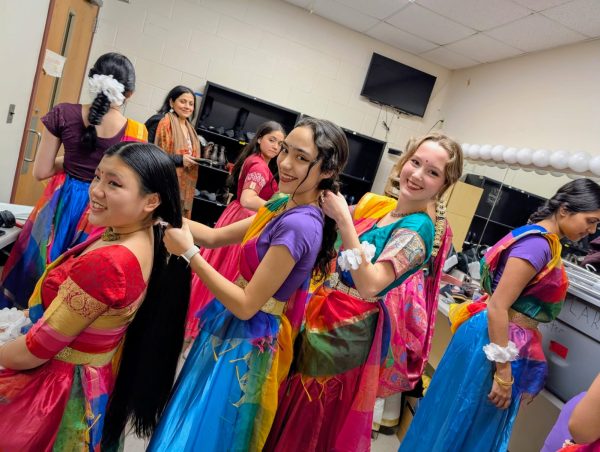
The moments leading up to the production were “chaos,” according to Gujral. Dancers were busy getting ready, doing their hair and makeup and putting on their outfits. Props were set up on the stage. Friends and family, who offered to help, set up garlands around railings in the Theatre, while last minute run-throughs of dances occurred.
Finally, the time for the performance of Shringar arrived. Adrenaline and anxiety circulated the cast as they prepared to show off their seven months of hard work to a full Theatre.
“I was super scared about going on stage because it was completely sold out,” sophomore Dhwani Nathan said. “[Black Box Theatre is] surrounded by the audience on three sides so… you’re right in the middle. Making a mistake is scary, but it was really exciting.”
Now that Shringar has come to a close, the club will continue their goal of spreading joy through dance and South Asian culture through performances at temples, events and even at the other schools in Eanes.
“I’m really grateful for everyone for pouring every single portion of themselves for this production [and for] the hard work that went in,” Roy said “The main goal of this club is to promote the idea of celebrating diversity through the form of dance [and] it is such a blessing for us to represent it within the heart of Westlake.”

